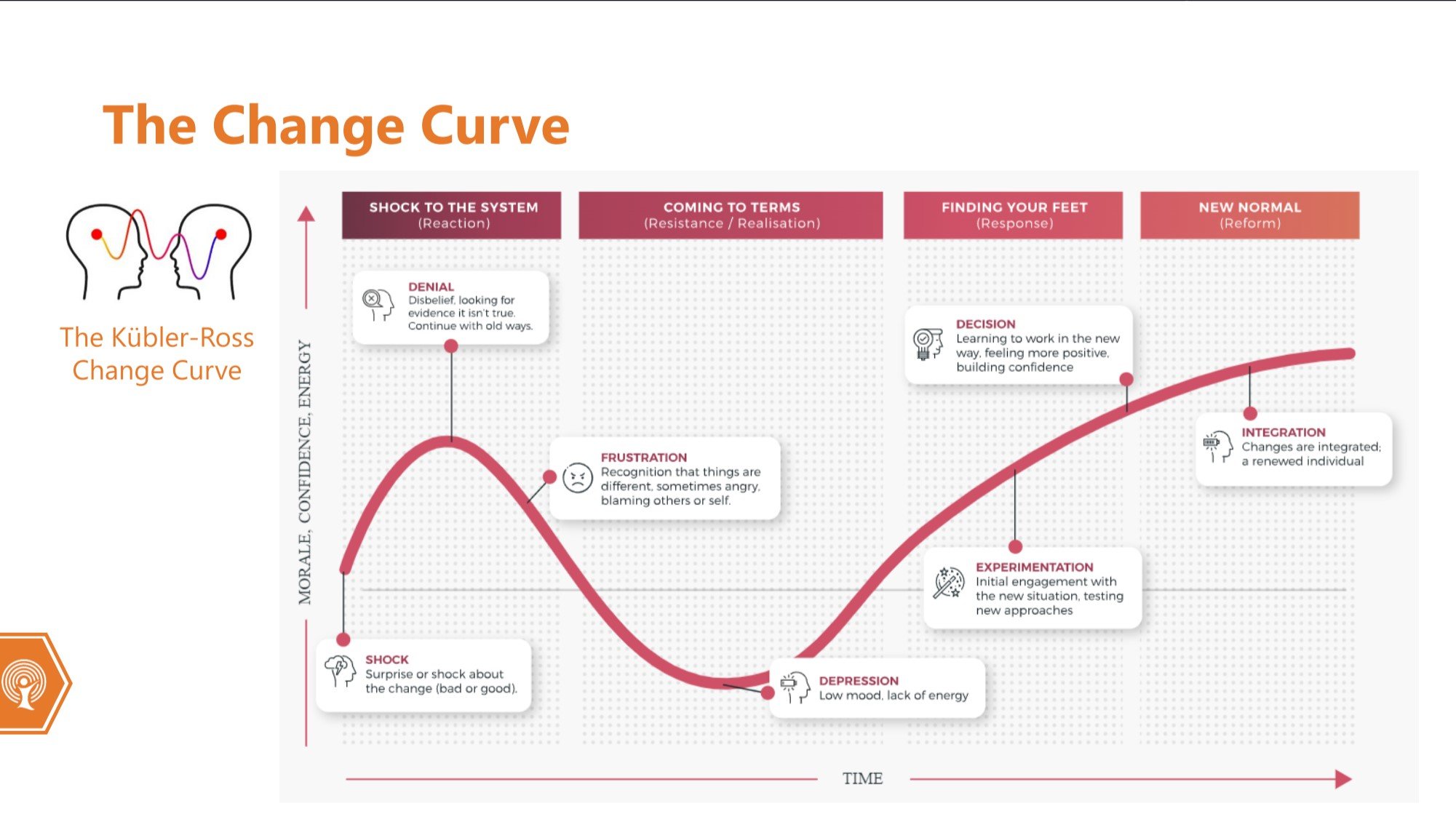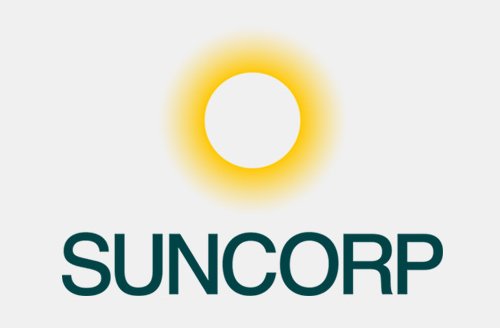“Understanding the capability of the new platform and the options available is key so employees can get the most from their Teams experience, and this is what has made the implementation of this project such an outstanding success. “
Technology Change
Adoption Change Management
Suncorp New Zealand (SNZ) is part of Suncorp Group Limited, a leading financial services provider that offers banking, wealth management and insurance products and services in Australia and New Zealand. Suncorp New Zealand has 1100 employees in NZ.
Suncorp New Zealand was undergoing a major technology shift, replacing Skype for Business with a fully unified communications solution using Microsoft Teams. Suncorp New Zealand recognised that this change would have varying levels of impact across the organisation and was committed to ensuring the transition to Teams was a positive experience for employees.
Suncorp Executive Manager Infrastructure and Operations, Mark Atherton, says the company recognised that creating the best user experience for staff during the transition was crucial to the success of the project.
“When you’re investing in a new platform or technology, firstly it’s essential that it’s fit for purpose and delivers a more effective way of working for employees, then it’s about ensuring employees are transitioned across in a positive way so they can understand the need for change and can see the value and benefits. Ultimately, if it’s the right platform and introduced with minimal disruption, this has positive flow-on effects to the business and customers,”
Utilising, not using
Kambium’s Haider Khan says the key to successful outcomes with projects such as major technology changes within an organisation are in how the change management is approached.
“It’s the difference between a cost model and a benefits realisation model. Many businesses focus on bringing projects in on time and on budget and regard that as the crucial measure of success. But at the end of the project, if your people aren’t utilising the new technology to the full, then you’re not getting the benefits you wanted, whether those were explicit or merely implied. The true success of any project depends on not just what happens at launch, but what real benefits the business sees from the change down the line. What we do is all about realising those benefits.”
A common problem for any business enacting change is resistance from staff. Management can often expect staff to be on board with the change and immediately adopt the new ways of working. Consideration of the change journey needs to be made by engaging with those at the receiving end of change. Understanding their “what’s in it for me” is very powerful to support the process and sustain the change over the long term.
“People can be resistant for many reasons, but fundamentally if you fail to take people on the right journey, address their fears and get them excited for the benefits, then you can’t expect them to make the kind of smooth transition you want,” says Kahn.
Ensuring that Adoption and Change Management (ACM) is included in project plans and implemented using the appropriate frameworks, stakeholder engagement and business readiness activities is vital to successful technology projects and digital transformation.

A framework for success
The migration to Microsoft Teams at Suncorp New Zealand was in two phases. First came the deployment and adoption of the Teams application in August 2021, followed by the migration to Enterprise Voice and in November and the decommission of Skype.
Caitlin Boorman, Practice Lead Change Management at Kambium, says a crucial part of ensuring that both phases were successful was in understanding the changes and what their impact would be across stakeholder groups. This helped to create a smooth transition into new ways of working.
As part of the Change Management Plan, we created a communications campaign around ‘Why Teams’ and the rich user experiences Suncorp New Zealand would have from the platform. A lack of awareness of the ‘Why’ for a change is a main driver of resistance among those who will have to adopt it. Kambium used the ADKAR Change Management framework to design the Change Management Plan. ADKAR is based on the idea that without individual change there can be no successful organisational change. It represents five areas the individual must address for change to be successful; awareness of the need, desire to participate, knowledge on how to change, ability to learn new skills and behaviours and reinforcement to ensure change is sustained.
“It’s our guiding principle that frameworks as part of the change plan are very effective. At the same time, you need to be curious to understand an organisation and have flexibility to adapt to the needs of each business and project. Frameworks help guide us to achieve solid understanding of the business needs, scope of the change, culture of the organisation and the change activities required for adoption. This is what helps us deliver an optimal outcome. We create a different plan for each client and project because it’s never one size fits all,” says Boorman.

In Suncorp’s case, Kambium started by connecting with key stakeholders across the 11 business areas. Kambium worked with Business Readiness Consultants, a network of Change Champions and other key stakeholders to gain insight into their business area and how the change would impact the various groups. A Change Plan detailing user experience, communications and training plans were then developed for both phases of the project. An important step in communicating across the organisation was the creation of a champion network of 40 employees from across all 11 business areas.
“The champion network was a huge success in reducing resistance, understanding the change impacts, creating excitement for Teams, and achieving a positive employee experience. The project team and I were able to cascade information to the organisation through the change champion network as well as receive feedback from the champions on communications and training material. They were our early adopters,” says Boorman. “The Champions attended weekly project updates, piloted training material, and supported at Go Live. The individuals were key influencers within their part of the organisation and who were likely to be most impacted by the technology, so bringing them on-board as champions and early adopters was a crucial step in creating effective change.”
Another vital tool was SharePoint, which was used to communicate project information and timelines, FAQs, and training resources. Other communication channels included an all-employee newsletter and presentations to leadership forums. The training plan was designed to provide easy-to-digest information in multiple formats, including virtual trainer-led demonstrations, eLearning demo videos and quick reference guides.
To measure the change adoption success, Kambium evaluated click rates on communications, feedback from the champion network and Business Readiness Consultants, and circulated feedback forms. This enabled Kambium to understand how staff were adapting and tweak communications and training where required.
Conclusion
The result of Adoption and Change Management was a smooth transition to a new way of working with employees who were eager to adopt the new technology. Employees understood ‘Why Teams’ and the key benefits. We built capability of how to use Teams prior to deployment and showed how easily Teams integrates into day to day working. It is important to understand that ACM goes beyond just lowering resistance to change and minimising disruption at time of implementation. Its ultimate value is in enabling the change to really take hold and be fully realised, so that the organisation gets the maximum benefit they were seeking.
Suncorp’s Atherton says delivering on this promise was vital to the project’s success.
“Understanding the capability of the new platform and the options available is key so employees can get the most from their Teams experience, and this is what has made the implementation of this project such an outstanding success. Many of our employees were hybrid working long before the Covid-19 pandemic, however, most had been working full-time from home since the August lockdown. Microsoft Teams has enhanced this vital virtual experience for all of us and has been more reliable, keeping us better connected at a time when it’s needed most.”


